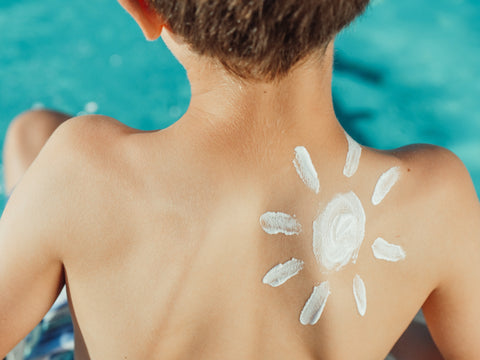Hawaii Sunscreen and Skin Cancer: What you Need to Know
Hawaii's sunny climate can be both a blessing and a curse. While the tropical sun can be absolutely delightful for basking and enjoying beach-time, it can also cause skin damage and increase the risk of skin cancer.
Hawaii Sunscreen and Skin Cancer: The Link Between Sun Exposure and Skin Cancer
Skin cancer is the most common type of cancer in the United States, and exposure to UV radiation from the sun is the primary cause of skin cancer. When UV radiation penetrates the skin, it can damage the DNA in skin cells, which can lead to the growth of cancerous cells.
Hawaii's tropical climate means that the sun is strong year-round, and the state has one of the highest rates of skin cancer in the country. However, skin cancer is also one of the most preventable types of cancer, and wearing sunscreen is an important way to protect yourself.
Choosing the Right Sunscreen for Hawaii
When talking about Hawaii sunscreen and skin cancer it's important to note that not all sunscreens are created equal, and it's important to choose a sunscreen that provides adequate protection against UV radiation. Look for a sunscreen with an SPF of at least 30, and make sure it provides broad-spectrum protection, which means it protects against both UVA and UVB rays.
Hawaii has banned sunscreens containing oxybenzone and octinoxate, two chemicals that are harmful to coral reefs. Look for sunscreens containing zinc oxide or titanium dioxide instead, which are safe for the environment and provide effective sun protection. If you have sensitive skin, allergies or any other concerns, you can look into getting a custom sunscreen made for you at Wailea People and Paws Pharmacy, where they are able to create personalized sunscreen with a prescription.
Using Sunscreen Correctly in Hawaii
Applying sunscreen correctly is just as important as choosing the right sunscreen. Apply sunscreen at least 15 minutes before going outside, and reapply every two hours or after swimming or sweating. Be sure to apply sunscreen to all exposed skin, including your face, neck, ears, and scalp.
It's also important to use enough sunscreen to provide adequate protection. When thinking about Hawaii sunscreen and skin cancer, less is NOT more. A good rule of thumb is to use about one ounce of sunscreen, which is about the amount that would fit in a shot glass.
Other Ways to Protect Yourself from Skin Cancer in Hawaii
In addition to Hawaii sunscreen and skin cancer, there are other ways to protect yourself. Seek shade during the hottest part of the day, which is typically between 10 a.m. and 4 p.m. Wear protective clothing, such as hats and long-sleeved shirts, and avoid tanning beds, which can also increase the risk of skin cancer.
Regular skin checks are also important for early detection of skin cancer. Check your skin regularly for any new or unusual moles or spots, and see a dermatologist if you notice any changes.
Protecting yourself from skin cancer is important in Hawaii's sunny climate. Choosing the right sunscreen, using it correctly, and taking other protective measures can help reduce your risk of skin cancer. Don't hesitate to talk to your doctor or dermatologist about how you can protect yourself from this common and preventable type of cancer.

